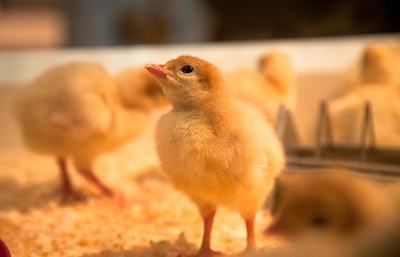
A simple and low-cost approach of ‘listening’ to chicks could alert poultry farmers to distress calls and welfare issues, according to a study published in the Journal of the Royal Society Interface.
“Chickens are descended from birds that live in really dense forests, so they rely on acoustic communications. They have a kind of vocabulary that contains a lot of useful calls that either reflect specific context or emotional intensity,” explained Dr. Katherine Herborn, lead author of the study and Lecturer in Physiology and Behaviour, School of Biological and Marine Sciences, University of Plymouth.
The novel approach gives farmers an automated and quantitative way to listen for deviations from normal calls and sounds in the shed.
The project was led by Professor in animal behaviour informatics, Dr. Lucy Asher at Newcastle University, in collaboration with animal welfare experts: Dr. Alan McElligott at the University of Roehampton (now at the City University of Hong Kong) and Professor Malcolm Mitchell and Dr. Victoria Sandilands at Scotland’s Rural College, with postgraduate researcher Brett Bradshaw.
The shape of sound
During the study, the researchers analyzed the acoustic recordings of 12 flocks comprised of 25,000 chicks to extract ‘spectral entropy,’ which captures the tonality of a sound.
“As the overall sound shifts towards lower frequencies, higher frequencies or becomes more flat, that can tell you about the composition of different sounds in there,” said Herborn. “Spectral entropy extracts out the shape of the overall sound.”
In other words, the technique listens for deviations in expected background sound, distinguishing chick distress calls from the background noise of regular calling or farm machinery.
Possible ‘iceberg indicator’
The distress calls can be used to predict flock-like behavior, future growth and the mortality rate over the life of the bird, the study showed. This suggests that the calls may be an ‘iceberg indicator’ that can reveal a wide range of information about welfare.
“There is enormous potential to get information from the animal’s own perspective on their environment. They have all these natural behaviors, for example the vocalizations, that are linked to particular ecological context. Being able to tune into those can really tell us a lot about specifically how they are experiencing their environment and perhaps detect things that are not perceptible to us, but are affecting them,” Herborn said.
The research was funded by the Biotechnology and Biological Sciences Research Council in an Innovate UK partnership with Greengage Lighting Ltd.
Like what you just read? Sign up now for free to receive the Poultry Future Newsletter.


















